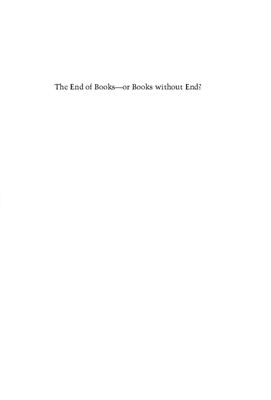Publisher: University of Michigan Press.
Date: September 6, 2001.
Format: PDF.
Pages: 216.
Of all developments surrounding hypermedia, none has been as hotly or frequently debated as the conjunction of fiction and digital technology. J. Yellowlees Douglas considers the implications of this union. She looks at the new light that interactive narratives may shed on theories of reading and interpretation and the possibilities for hypertext novels, World Wide Web-based short stories, and cinematic, interactive narratives on CD-ROM. She confronts questions that are at the center of the current debate: Does an interactive story demand too much from readers? Does the concept of readerly choice destroy the integrity of an author's vision? Does interactivity tu reading fiction from "play" into "work"--too much work? Will hypertext fiction overtake the novel as a form of art or entertainment? And what might future interactive books look like?
The book examines criticism on interactive fiction from both proponents and skeptics and examines similarities and differences between print and hypertext fiction. It looks closely at critically acclaimed interactive works, including Stuart Moulthrop's Victory Garden and Michael Joyce's Afteoon: A Story that illuminate how these hypertext narratives "work. " While she sees this as a still-evolving technology and medium, the author identifies possible developments for the future of storytelling from outstanding examples of Web-based fiction and CD-ROM narratives, possibilities that will enable narratives to both portray the world with greater realism an to transcend the boundaries of novels and films, character and plot alike.
Written to be accessible to a wide range of readers, this lively and accessibly-written volume will appeal to those interested in technology and cyberculture, as well as to readers familiar with literary criticism and mode fiction.
J. Yellowlees Douglas is the Director of the William and Grace Dial Center for Written and Oral Communication, University of Florida. She is the author of numerous articles and essays on the subject of hypertext and interactive literature.
Date: September 6, 2001.
Format: PDF.
Pages: 216.
Of all developments surrounding hypermedia, none has been as hotly or frequently debated as the conjunction of fiction and digital technology. J. Yellowlees Douglas considers the implications of this union. She looks at the new light that interactive narratives may shed on theories of reading and interpretation and the possibilities for hypertext novels, World Wide Web-based short stories, and cinematic, interactive narratives on CD-ROM. She confronts questions that are at the center of the current debate: Does an interactive story demand too much from readers? Does the concept of readerly choice destroy the integrity of an author's vision? Does interactivity tu reading fiction from "play" into "work"--too much work? Will hypertext fiction overtake the novel as a form of art or entertainment? And what might future interactive books look like?
The book examines criticism on interactive fiction from both proponents and skeptics and examines similarities and differences between print and hypertext fiction. It looks closely at critically acclaimed interactive works, including Stuart Moulthrop's Victory Garden and Michael Joyce's Afteoon: A Story that illuminate how these hypertext narratives "work. " While she sees this as a still-evolving technology and medium, the author identifies possible developments for the future of storytelling from outstanding examples of Web-based fiction and CD-ROM narratives, possibilities that will enable narratives to both portray the world with greater realism an to transcend the boundaries of novels and films, character and plot alike.
Written to be accessible to a wide range of readers, this lively and accessibly-written volume will appeal to those interested in technology and cyberculture, as well as to readers familiar with literary criticism and mode fiction.
J. Yellowlees Douglas is the Director of the William and Grace Dial Center for Written and Oral Communication, University of Florida. She is the author of numerous articles and essays on the subject of hypertext and interactive literature.

